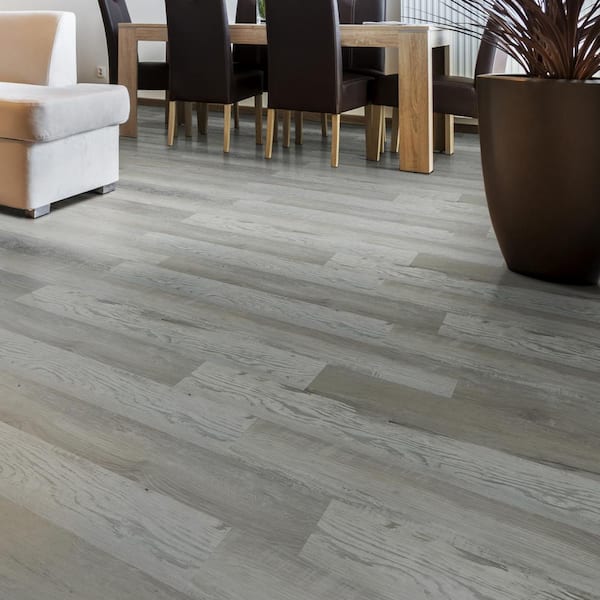Choosing the right flooring for your home can be a daunting task, but it’s an important decision that can greatly impact the overall look and function of your living space. Different rooms have different needs, so it’s important to consider the pros and cons of each flooring material. In the kitchen, for example, hardwood floors offer a timeless and warm aesthetic, while engineered wood or porcelain tiles provide more moisture resistance. The living room is where you entertain guests and spend quality time with your family, so comfort, style, and durability are key. Hardwood floors and laminate flooring are great options, or you could opt for a plush carpet for a cozy vibe. In the basement, you’ll want flooring that can handle moisture and cold temperatures, such as vinyl or ceramic tiles. And for the balcony, outdoor tiles or wooden decking are durable choices that can withstand the elements. In the bedroom, comfort underfoot is a priority, so carpeting is popular, but hard-surface flooring like hardwood or laminate can also be a great option. Lastly, in the bathroom, water-resistant flooring like ceramic or porcelain tiles are essential, but luxury vinyl tiles or even cork flooring are worth considering for a warmer and softer feel. This article will go into more detail about the pros and cons of each flooring material, helping you make an informed decision for your home. When it comes to hardwood floors, there are many advantages. They offer a timeless and warm aesthetic that can elevate the overall look of your home. Hardwood floors also pair well with various styles, making them versatile and adaptable to any design scheme. However, it’s important to note that hardwood floors can be quite expensive compared to other flooring options. Additionally, they are prone to scratches and moisture damage, so you’ll need to take extra care to maintain their quality.
Engineered wood is another popular choice for flooring, especially in areas where moisture is a concern. It is made up of layers of wood veneer with a top layer of hardwood, providing a similar look to traditional hardwood floors but with increased resistance to moisture. This makes it a great option for kitchens and basements. However, one downside is that engineered wood has limited refinishing options. Unlike solid hardwood, which can be sanded and refinished multiple times, engineered wood can only be refinished once or twice.
Porcelain or ceramic tiles are a durable and low-maintenance flooring option for kitchens and bathrooms. They are hard-wearing and resistant to stains, making them easy to clean. Additionally, they come in a wide variety of styles, allowing you to choose the perfect design for your space. However, it’s important to note that porcelain or ceramic tiles can be cold underfoot, especially during colder months. Another disadvantage is that they may crack if not installed properly, so it’s essential to hire a professional to ensure a proper installation.
Luxury vinyl flooring has gained popularity in recent years due to its durability, water-resistance, and affordability. It is a versatile option that can mimic the look of hardwood, stone, or even tile. Luxury vinyl flooring is also easy to clean, making it ideal for high-traffic areas like kitchens. However, one downside to luxury vinyl flooring is that it can look synthetic, which may not appeal to everyone’s aesthetic preferences. Additionally, the design options may be more limited compared to other flooring materials.
Laminate flooring is a budget-friendly option that can closely mimic the look of real wood. It is made of multiple layers of compressed materials, with a printed image of wood on the top layer. Laminate flooring is durable and easy to install, which makes it a popular choice for DIY projects. However, it is prone to scratching, so it may not be as long-lasting as solid hardwood. It’s also important to note that laminate flooring is not as water-resistant as other materials, so it’s not recommended for areas with high moisture levels, such as bathrooms.
In the living room, many homeowners opt for plush carpeting to create a warm and cozy atmosphere. Carpeted floors can provide extra insulation and sound absorption, making them a great choice for homes with children or pets. However, plush carpeting requires more maintenance compared to other flooring options. Regular vacuuming and occasional deep cleaning are necessary to keep it looking fresh and free from allergens.
Vinyl flooring is a popular choice for basements, thanks to its water-resistant properties. It is an affordable option that comes in a variety of designs, including wood, stone, and tile. It is easy to clean and maintain, making it an excellent choice for high-moisture areas. However, some people may find that vinyl flooring can look cheap or lack the natural beauty of other materials. It’s also important to note that vinyl flooring may fade when exposed to sunlight over time.
When it comes to deciding on the flooring for your home, it’s essential to evaluate the specific needs of each space. Consider factors such as moisture resistance, durability, and style. By weighing the pros and cons of different flooring materials, you can make an informed decision that suits your preferences and lifestyle.
In conclusion, choosing the right flooring material for your home is crucial for both aesthetic and functional reasons. Whether you’re considering hardwood floors, engineered wood, porcelain or ceramic tiles, luxury vinyl flooring, laminate flooring, plush carpeting, or vinyl flooring, each option has its pros and cons. Take into account factors such as cost, durability, maintenance requirements, moisture resistance, and design options. By doing so, you can select the flooring material that best meets your specific needs and enhances the overall look and feel of your home.
